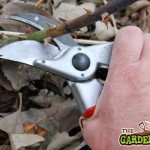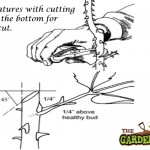One of the most loved garden plants is the rose. They offer colour and blooms from early summer right up to mid November. They can be found growing in many gardens providing cover, screening, focal points and centre pieces to planting schemes. But many face a common problem when it comes to pruning roses and that is how to do it, when to do it and why to do it. Choosing the right tool is important and you will need one that suits you and your roses so be sure to look at a range of pruners and shears before beginning your task.
- Pruning Roses
- Pruning Roses
- Pruning Roses
So why do we prune Roses? Short answer is to encourage new and fresh growth. The longer answer would include: to remove older, less active wood, to shape and train your plant, to remove dead, dying and diseased stems and of course to reduce the size of your plants. We prune to maintain our plants at a manageable size, to keep them healthy and to encourage better fruiting and flowering. And all this can be done with a little knowledge and some pruners or shears.
When to prune Roses? This varies for plants and even varies with different parts of the country. To prune roses you need to have your pruners and shears at the ready from late winter early spring. The best time to prune roses is before spring growth has commenced and after the worst of the frost has passed. This varies from year to year and sometimes it is impossible to leave it until after the frost. Buds begin to open once the weather has warmed up sufficiently, however that rarely means the end to the frost.
How to prune is equally as critical a question as when to prune. Ideally you will choose a secateurs from the range of pruners and shears at your disposal. Secateurs allow for clean and accurate cutting of individual stems which is exactly how you will need to prune roses.
When pruning shrub roses you should be aware that a hard pruning method is recommended as roses are vigorous plants and will quickly recover from any cutting back that you do. Every year cut back your roses to 1 foot off the ground. Using your shears, pruners or secateurs remove all dead, dying and diseased stems. Next remove any stems that are crossing over each other or rubbing.
Now begin the formative pruning where you prune to create the ideal shape for your roses. Begin by removing stems that conflict with the shape or habit of the plant. Roses should be outward growing with tall arching stems. Your pruners or shears can be used to train your roses to grow in this way. What you need is confidence that hard pruning back won’t harm your plants. Hard pruning will in fact invigorate them leading to an abundance of fresh new stems come early summer. By mid summer you’ll be busy deadheading the first set of blooms in anticipation of another show of colour.


